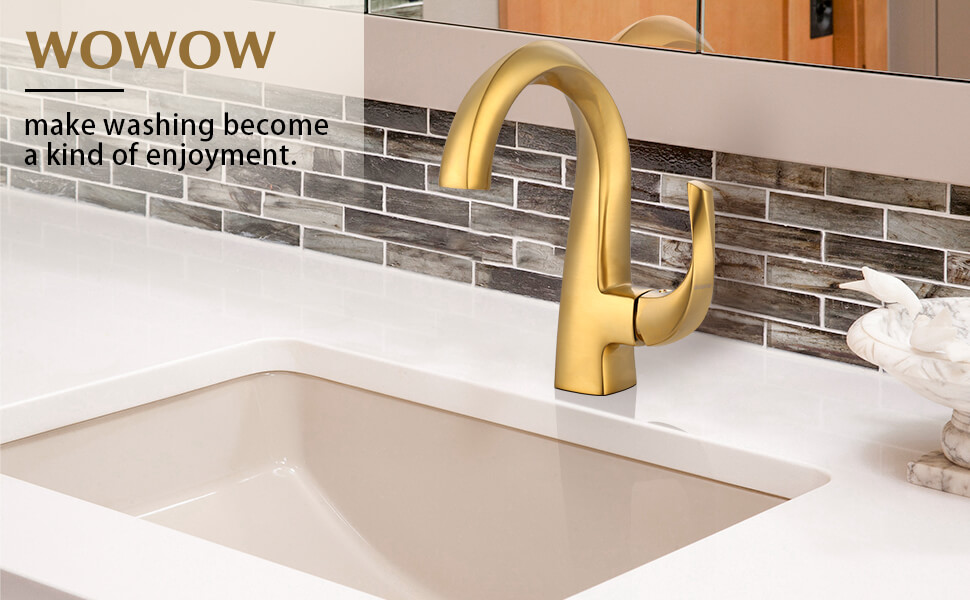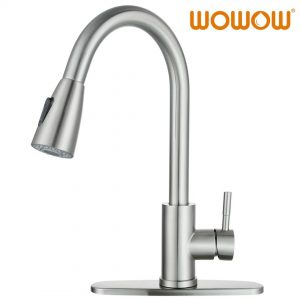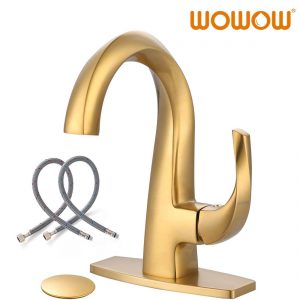
A leaky single-handle faucet can be an annoying and wasteful problem, causing both water and money to go down the drain. The good news is that you don’t need to be a plumbing expert to fix it. With a few tools, some patience, and a bit of know-how, you can tackle this common household issue and have your faucet running smoothly again. In this guide, we’ll walk you through the steps to fix a leaky single-handle faucet.
Tools and Materials You’ll Need
Before you begin, gather the following tools and materials:
- Adjustable wrench
- Screwdriver
- Allen wrench (hex key)
- Replacement parts (O-rings, washers, and cartridges)
- Teflon tape
- Plumber’s grease
- Rag or towel
- Bucket or container to catch water
Step 1: Turn Off the Water
Before you start disassembling the faucet, make sure to turn off the water supply to the sink. Usually, there are shut-off valves under the sink. Turn them clockwise to shut off the water flow. If there are no individual shut-off valves, you may need to turn off the main water supply to your house.
Step 2: Drain the Faucet
Open the faucet to allow any residual water to drain from the pipes. Place a towel or rag in the sink to catch any drips.
Step 3: Remove the Handle
The method for removing the handle may vary depending on the faucet’s design. Most single-handle faucets have a screw located beneath a decorative cap. Here’s how to proceed:
- Carefully pry off the decorative cap with a screwdriver to expose the screw.
- Use an Allen wrench or screwdriver to remove the screw.
- Gently lift off the faucet handle.
Step 4: Access the Cartridge or Ball
Once you’ve removed the handle, you’ll have access to the cartridge or ball assembly, which is typically the source of the leak. The specific type of faucet you have will determine your next steps:
- Cartridge Faucet: In a cartridge faucet, you’ll find a cylindrical cartridge that controls both the water flow and temperature. Use pliers or an adjustable wrench to carefully remove the cartridge.
- Ball Faucet: Ball faucets have a round ball joint that controls both hot and cold water. Remove the collar and then lift out the ball assembly.
Step 5: Replace O-rings and Washers
Leaky faucets are often caused by worn O-rings or washers. Check these components for damage or wear. If you notice any issues, replace them with new ones. Make sure to use parts that are specifically designed for your faucet model.
Step 6: Apply Plumber’s Grease
Before reassembling the faucet, apply plumber’s grease to any rubber or plastic components to ensure a proper seal. This will help prevent future leaks and make the faucet operate smoothly.
Step 7: Reassemble the Faucet
Carefully reassemble the faucet by following the steps in reverse order. Ensure that all parts are snug but not overtightened to avoid damaging any components. Make sure the faucet handle is securely attached.
Step 8: Test the Faucet
Turn the water supply back on and test the faucet. Start by turning it on slowly to check for any leaks. Gradually adjust the temperature and flow to make sure the faucet operates smoothly without any drips.
Step 9: Tighten Loose Connections
If you notice any leaks at the base of the faucet or around the connections, use an adjustable wrench to tighten any loose parts. Be cautious not to overtighten, as this can damage the components.
Step 10: Reassemble the Handle
Once you are satisfied that the faucet is no longer leaking, reattach the handle. Secure it in place by tightening the screw or reattaching the decorative cap.
Step 11: Finish Up
Wipe down the area around the faucet to remove any excess water and clean the sink. Your leaky single-handle faucet should now be fixed and fully operational.
Preventing Future Leaks
To prevent future leaks and extend the life of your faucet, consider these tips:
- Regular Maintenance: Perform routine checks on your faucet to catch potential issues early.
- Avoid Over-Tightening: Be gentle when reassembling the faucet to avoid damaging the components.
- Use Plumber’s Grease: Apply plumber’s grease to moving parts during reassembly to prevent friction and reduce wear.
- Replace Seals and O-rings: If you notice any wear or damage, replace seals, O-rings, and washers promptly to prevent leaks.
Conclusion
Fixing a leaky single-handle faucet is a manageable DIY task that can save you money and reduce water waste. By following the steps outlined in this guide and taking preventative measures to maintain your faucet, you can keep your kitchen or bathroom in top working condition. Remember that if you encounter any complications or the leak persists, it may be time to consult a professional plumber for further assistance.
 WEWE Kitchen Faucets
WEWE Kitchen Faucets


您好!please sign in